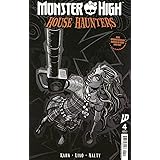The culinary journey presented in the accompanying video showcases “Anna famous bonda,” a true staple of Indian street food. Bonda represents more than just a snack. It embodies a rich tapestry of flavors and regional traditions. This deep-fried fritter is celebrated across the subcontinent. It offers a unique sensory experience.
For those unfamiliar, bonda is a savoury, deep-fried fritter. It typically features a spiced filling encased in a crisp batter. This batter varies by region and specific bonda type. It serves as a testament to India’s diverse gastronomic landscape.
Understanding the Bonda Phenomenon
Bonda’s origins are deeply rooted in South Indian cuisine. Its simplicity belies a complex flavor profile. Historically, it emerged as an accessible, energy-rich snack. Street vendors quickly popularized its various forms.
The basic premise involves frying a prepared mix. Ingredients often include chickpea flour or maida. Regional variations greatly influence its texture and taste. This adaptability makes bonda universally appealing.
Key Regional Bonda Variations
Several distinct bonda types exist. Each boasts its own unique characteristics. Understanding these variations is crucial. It highlights the dish’s culinary versatility.
Aloo Bonda: The Ubiquitous Potato Fritter
Aloo bonda is perhaps the most famous iteration. It features a spiced potato mash filling. This filling includes ginger, garlic, and curry leaves. The seasoned potatoes are then enrobed in a chickpea flour batter. Frying yields a golden, crispy exterior. This classic bonda is a popular tea-time snack. It pairs exceptionally well with various chutneys.
Mysore Bonda: The Fermented Delight
Mysore bonda offers a distinct texture and taste. Its batter relies on all-purpose flour (maida) and yogurt. A critical fermentation step enhances its flavor. This process yields a lighter, fluffier interior. Mysore bonda is often served with coconut chutney. It represents Karnataka’s culinary expertise.
Goli Baje (Mangalore Bonda): A Coastal Specialty
From the coastal regions of Karnataka comes Goli Baje. This specific bonda uses maida and sour curd. Its batter is leavened, resulting in a soft, puffy fritter. The exterior is wonderfully crisp upon frying. Goli Baje is typically enjoyed with a tangy ginger chutney. It perfectly captures Mangalorean flavors.
Other Notable Bonda Types
Beyond these, numerous other bonda variations exist. Urad Dal Bonda utilizes black gram lentils. Its batter offers a distinctive taste. Cabbage Bonda incorporates finely shredded cabbage. These examples showcase bonda’s extensive adaptability. Each region contributes its unique culinary signature.
The Art and Science of Crafting Bonda
Creating the perfect bonda involves precision. From ingredient selection to frying technique, every step matters. A keen understanding of the culinary process is essential. It ensures an authentic and delicious outcome.
Mastering the Bonda Batter
The batter is foundational to any bonda. Chickpea flour (besan) is common for savory versions. It provides a robust, nutty flavor. Rice flour often adds extra crispness. Leavening agents like baking soda create desired fluffiness. The consistency of the batter is paramount. It must coat the filling adequately.
For maida-based bondas, fermentation is key. Yogurt acts as an acid, reacting with baking soda. This generates carbon dioxide, creating air pockets. These pockets contribute to the fritter’s light texture. Achieving the correct emulsion prevents oil absorption.
The Inner Filling: A Symphony of Spices
The filling provides the core flavor profile. Potatoes are often mashed and expertly spiced. Ginger, green chilies, and curry leaves are standard additions. Mustard seeds and asafoetida (hing) often feature in tempering. This process unlocks their aromatic compounds. The balance of heat and savory notes is crucial.
Vegetable bondas may include carrots, peas, or onions. Each addition offers a different texture and taste. The fillings are generally dry. This prevents the batter from becoming soggy. Proper moisture content ensures structural integrity.
Deep-Frying Techniques
Deep-frying is a delicate operation. The oil temperature must be carefully controlled. Too low, and the bonda absorbs excess oil. Too high, and the exterior burns before the interior cooks. A temperature range of 325-350°F (160-175°C) is generally ideal. This ensures even cooking and a golden-brown finish.
Frying in batches is recommended. Overcrowding the pan lowers oil temperature. This compromises crispness and texture. Once fried, bondas are drained on paper towels. This removes residual oil effectively. Serving immediately ensures maximum enjoyment.
The Cultural Significance of Bonda
Bonda is more than just food; it’s a cultural touchstone. It represents hospitality and community. Often served at gatherings, it fosters connection. Its presence is synonymous with vibrant street food scenes. The accessibility of bonda makes it a democratic snack.
Whether from a bustling street stall or a home kitchen, bonda evokes comfort. It is often a key component of tiffin meals. Its versatility allows for diverse culinary pairings. This beloved fritter continues to be a highlight. It remains a definitive example of Indian street food culture.











